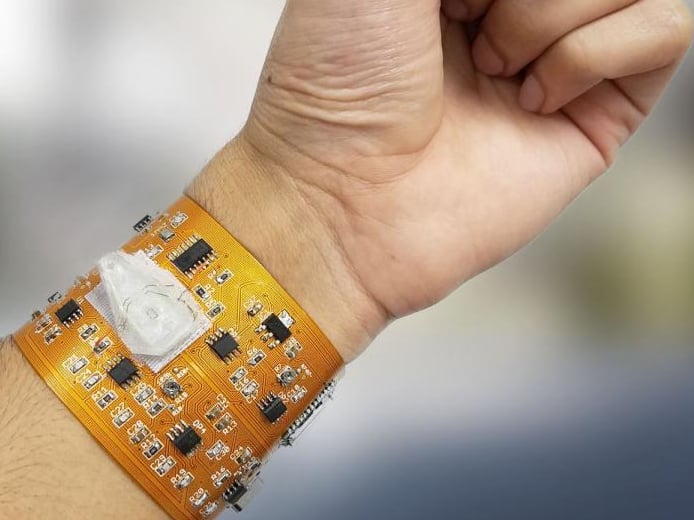Wristband wearable monitors health and environment

Engineers have created a smart wristband with a wireless connection to smartphones that they believe will lead to a new wave of personal health and environmental monitoring devices.

The technology, developed at Rutgers University-New Brunswick, could be added to watches and other wearable devices that monitor heart rates and physical activity. The advance is detailed in a study published online in Microsystems & Nanoengineering.
"It's like a Fitbit but has a biosensor that can count particles, so that includes blood cells, bacteria and organic or inorganic particles in the air," said Mehdi Javanmard, senior author of the study and assistant professor in the Department of Electrical and Computer Engineering in the School of Engineering.
"Current wearables can measure only a handful of physical parameters such as heart rate and exercise activity," said Abbas Furniturewalla, study lead author and former undergraduate researcher in the Department of Electrical and Computer Engineering. "The ability for a wearable device to monitor the counts of different cells in our bloodstream would take personal health monitoring to the next level."
Register now to continue reading
Thanks for visiting The Engineer. You’ve now reached your monthly limit of news stories. Register for free to unlock unlimited access to all of our news coverage, as well as premium content including opinion, in-depth features and special reports.
Benefits of registering
-
In-depth insights and coverage of key emerging trends
-
Unrestricted access to special reports throughout the year
-
Daily technology news delivered straight to your inbox










National Gas receives funding to develop Gravitricity underground hydrogen storage system
One single rock salt mine - Winsford - has 23 <i>MILLION </i>cubic metres of void and even allowing for 10% of that void set aside for hazardous waste...